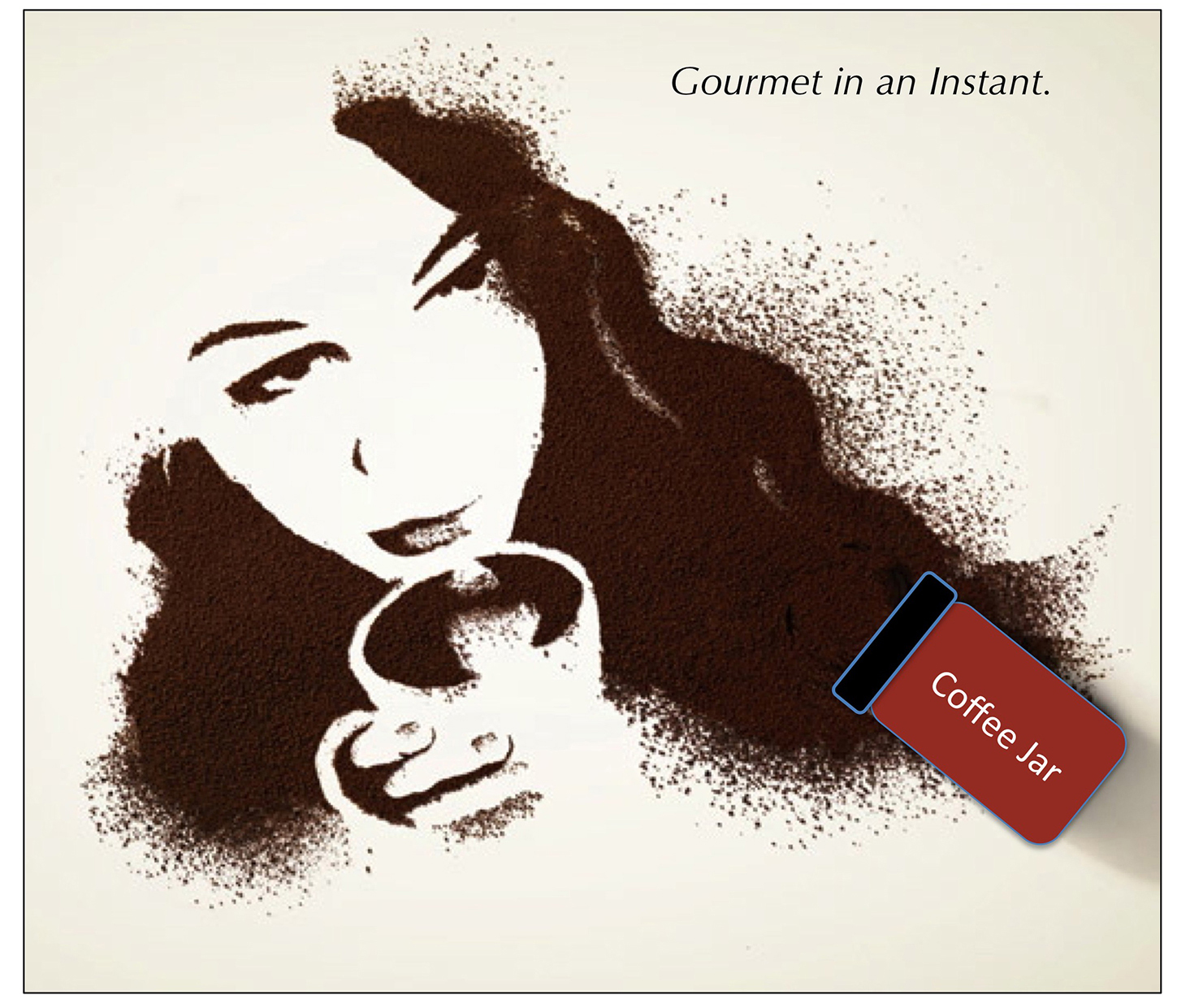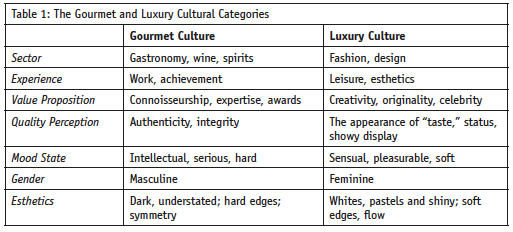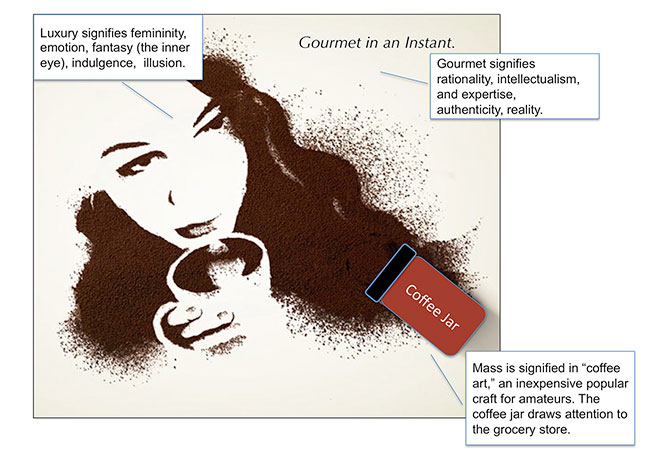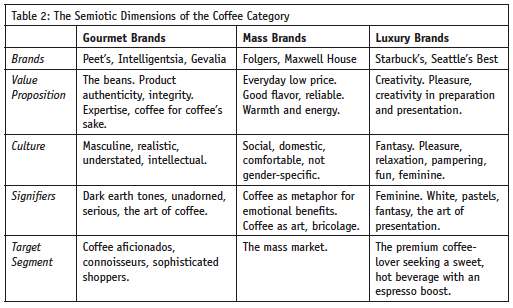Signs of confusion
Editor's note: Laura Oswald is founding director of Chicago-based Marketing Semiotics.
 We all know cases of ad campaigns that win awards for artistic achievement but fail to gain traction in the marketplace. In my experience, the problem usually originates in conflicts between the campaign’s messaging and the brand’s core positioning and identity. Such conflicts generate consumer confusion and distrust because they communicate ambiguity about the brand’s core value proposition and legacy.
We all know cases of ad campaigns that win awards for artistic achievement but fail to gain traction in the marketplace. In my experience, the problem usually originates in conflicts between the campaign’s messaging and the brand’s core positioning and identity. Such conflicts generate consumer confusion and distrust because they communicate ambiguity about the brand’s core value proposition and legacy.
After all, the strategic function of any single ad is based not upon a single image but upon relationships between the brand’s historical legacy, the competitive environment and consumer culture. The single campaign does not stand alone.
I increasingly field requests from marketers to perform a one-hour semiotic assessment of an ad campaign or new product concept without any prior participation in their project. The strategic semiotic analysis involves comparing and contrasting the ad’s semiotic structure with a large set of ads for the category (Oswald 2012).
In a manner similar to military strategy, semioticians – those who study and understand the use and meanings of signs and symbols – assess the strategic value of any single marketing event with reference to its relationship to other players and variables in a market. The strategic function of a campaign, concept or design strategy relies entirely on the way it aligns with four intersecting contexts: the brand’s historical legacy; the competitive environment; category trends – including technology; and consumer culture. Though the textual analysis of specific ads defines an early stage in the semiotic process, strategic semiotic research does not end there.
Respondents could not agree
A case in point is an advertising study I conducted for a global coffee brand that I will reference with the pseudonym Instant Gourmet. In advertising testing, respondents could not agree on the ad’s cultural positioning (Figure 1). Was it pop art, fine art or avant-garde? Respondent perceptions were reiterated by findings from the semiotic study of the campaign that follows. (For a detailed case summary, see Oswald 2015 chapter 2.)


The ad agency was banking on the campaign’s innovative esthetics to earn strong consumer approval and so the client commissioned semiotic research to account for the campaign’s poor reception. These kinds of problems usually begin upstream in the strategic positioning process so I proposed an investigation of the campaign’s strategic semiotic relationship to the brand legacy, the competitive environment, the coffee category generally and consumer culture. The campaign is then evaluated on the basis of its potential to support and strengthen the brand’s core identity and positioning within the category.
Since strategic semiotic research identifies the dominant discourses structuring meaning and value in a product category, the data set includes a large set of ads drawn from the brand’s history, the competitive set and the coffee category generally, including all formats and price points. The data also includes the packaging designs represented in the ads.
The data analysis begins by decoding individual ads and tracing the recurrence of the codes across the data set. Ads are then grouped in categories based upon the similarity of their code systems. For instance, the binary “elite/popular” differentiates premium brands from mass brands and is represented by a distinct set of symbolic cues, from color to characters. The visual semiotics of each category is then matched with a corresponding value proposition, i.e., bright primary colors consistently represent mass brands; more nuanced colors consistently represent premium brands. Usually these codes are not reserved to any particular category within food and beverage but also structure the perception of value across multiple categories, from coffee to dairy and packaged snacks.
By identifying these codes and classifications, the semiotician develops a set of tools for decoding and assessing specific advertising campaigns or new product concepts. In other words, though the researcher’s past experience with a category sharpens their approach to a project, the semiotician does not rely upon prior knowledge to assess the strategic strength of a marketing campaign or new product concept. They acquire this knowledge in the course of an exhaustive semiotic analysis of the brand, the category and consumer culture related to each project at a given time and in a given market.
For example, the binary “mass/premium” defines a primary value classification of coffee brands. Within the premium category we identified two distinct cultural positionings, gourmet and luxury (Table 1). We also identified a consistent set of signifiers for each classification. Mass brands are associated with bright primary colors, domestic settings and families; gourmet brands are associated with dark browns and greens, connoisseurship and individuals or couples; and luxury brands are associated with whites and pastels, self-indulgence and fantasy.
Compared and contrasted
We began by assessing the ad’s consistency with the brand’s emotional legacy, as communicated in a set of historical ads and package designs going back 10 years. We then compared and contrasted the emotional positioning of the ad in relationship to current advertising and packaging for competitors in the instant coffee category, including Starbucks Via, Medaglia d’Oro and Nescafé. To decode the perception of value in the category, we also analyzed a broad collection of ads and packaging for all kinds of coffees across the category, including instant, brewed and espresso brands.
The semiotic analysis traces patterns in the data set formed by recurring associations between specific semiotic cues such as color, shape or rhetorical style – and specific meanings. If the historical advertising consistently associated the brand with self-indulgence, for example, we expect the new campaign to support the brand’s historical positioning. If advertising and packaging for the coffee category consistently associated the colors dark green and brown with a “gourmet” positioning (i.e., connoisseurship, intellectual, etc.), we inferred that dark green and brown were signifiers for the value proposition “gourmet.”
We then codified findings from the advertising analysis by classifying by them into binary pairs by cultural category, including sector, experience, value proposition, quality perception, mood state, gender and cultural capital. For instance, mass brands consistently use bright primary colors and practical settings to communicate their everyday, economical positioning, in contrast with the more subtle hues and sophisticated, rarefied environments used by premium brands. The analysis exposed a cultural paradigm at play in the mass brand category.
In contrast, the premium category references elite culture. It also includes two subcategories, gourmet and luxury. Analysis of a large set of coffee ads revealed a basic contrast between the dark green, brown and red color scheme of gourmet brands and the white and pastel color scheme of luxury brands. In fact this general color code prevailed in peripheral premium categories, from gastronomy to fashion. We expanded the “dark green-brown/white-pastel” binary into a paradigm classified by cultural category, including sector, experience, value proposition, quality perception, mood state, gender and cultural capital. The paradigmatic analysis reveals the deep strategic implications of a mismatched signifier for communicating the brand’s value proposition, identity and culture. Imagine trying to target the demanding, intellectual gourmet connoisseur using signifiers for the ostentatious, pleasure-seeking luxury consumer. In fact, that is precisely where the Instant Gourmet ad went awry.
Armed with the codes structuring meaning and value in the gourmet, luxury and mass coffee brand categories, we were ready to assess the clarity and consistency of the messaging in the Instant Gourmet campaign. As suspected, the semiotic analysis identified three distinct code systems referencing three cultural brand positionings, including gourmet, luxury and mass brands (Figure 2). As shown in Table 2, they include the luxury code system: feminine, dreamy (the inner eye), illusion, fantasy and fashion; the Gourmet code system: masculine, rational, reality, authenticity, gastronomy; and mass code system: amateur crafts (coffee art), references to the real (the real coffee jar).


Lacked a clear focus
In summary, the Instant Gourmet campaign failed in its strategic function because it lacked a clear focus on the brand’s core value proposition, i.e., an instant coffee with the quality and taste of a premium brewed coffee. Consumers’ responses to the ad confirm this principle. They detected ambiguity in the campaign and gave it low scores, in spite of the ad’s attention-grabbing esthetics.
One might ask how consumers, though not trained in semiotics, can detect ambiguity in a marketing campaign. In the same manner that humans learn language by repeated exposure to the language in daily life, consumers learn the codes structuring meaning in a category by means of routine, lifelong experience reading packaging, advertising and merchandising in the quest to satisfy their needs. Packaging codes guide consumers through their choices at the point of purchase because they structure consistent expectations about the value and cultural positioning of the product inside. Shoppers have learned from experience to identify processed snacks on the shelf by the bold colors and hyperbolic language on packaging. They also recognize contrasts between processed and natural snacks, with their earth tones and realistic claims. These codes define a kind of shorthand for consumers, enabling them to sort through the supermarket aisle with a quick sweep of the eyes down the supermarket aisle.
Basic truths
The case study highlights basic truths about marketing semiotic research and its implications for brand value.
1. Though semioticians draw upon their expertise to design and execute a study, the specific codes and classifications structuring meaning in a product category or market emerge in the course of a meticulous analysis of a large set of data, not from the researchers’ subjective mind.
2. Though marketing semiotics uses textual analysis to decode the individual units of a data set, the semiotic study is designed to transcend the analysis of any given text and understand a campaign or new product concept in relation to the codes organizing meaning and value in a product category or market.
3. The scope of marketing semiotics is not limited to advertising research but applies to any form of marketing communication, from consumer interviews and ethnographic observations to packaging and retail design.
4. Value-driven semiotic research is not a quick and superficial process. It demands expertise and attention to detail to gather and analyze category data and distill findings into actionable strategic recommendations for branding, advertising and design.
References
Oswald, Laura (2012). Marketing Semiotics: Signs, Strategies, and Brand Value. New York: Oxford University Press.
Oswald, Laura (2015). Creating Value: The Theory and Practice of Marketing Semiotics Research. New York: Oxford University Press.
